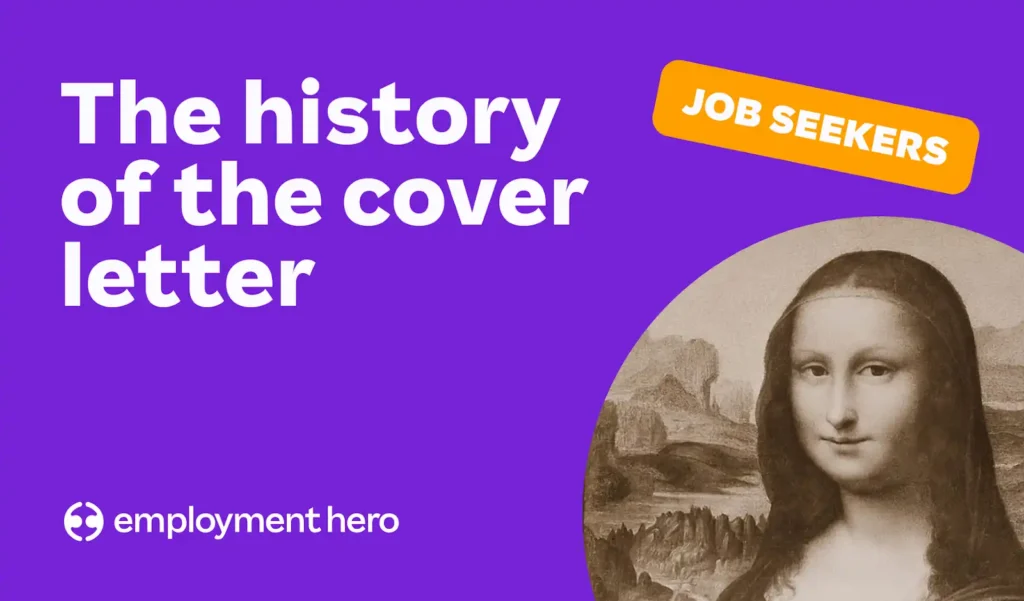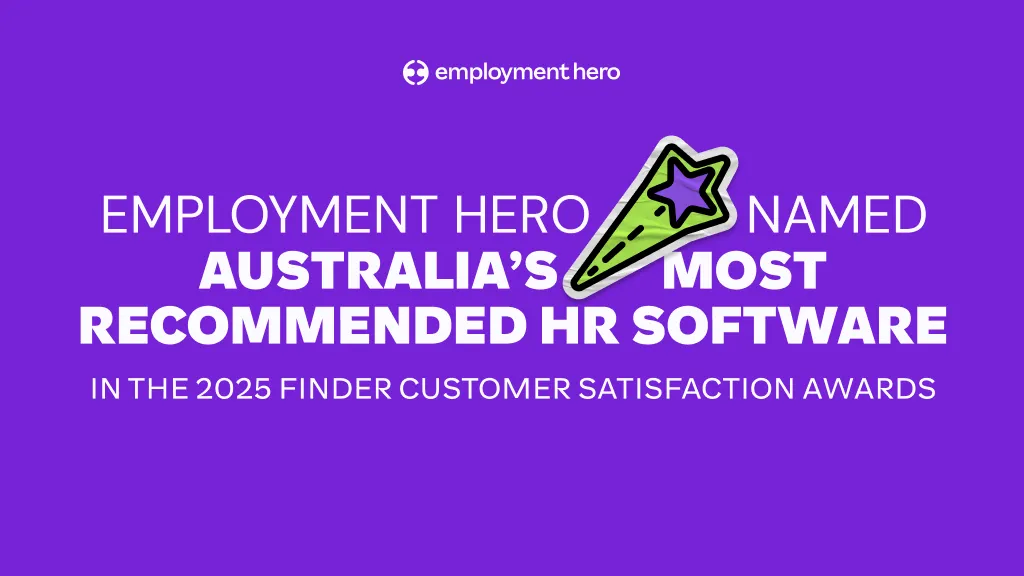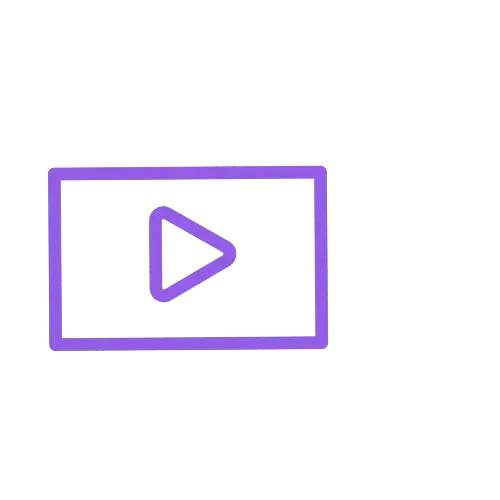The history of the cover letter (and its future)

Contents
The cover letter has been a steadfast companion to resumes for centuries, acting as a personal introduction to prospective employers. But where did this document begin, and how has it evolved over time? More importantly, are cover letters still essential in today’s job market and do they have a place in the market of tomorrow? Let’s explore the history of the cover letter, its evolution and its future, particularly in Australia.
What is a cover letter and why was it created?
A cover letter serves as a tailored introduction to accompany your resume. Its purpose is to highlight how your unique skills and experiences align with the needs of a specific role. While a resume lists qualifications and achievements, a cover letter offers context, tying your career story directly to the job you’re applying for.
Historically, cover letters arose as a way to establish a connection between job seekers and employers. Unlike the impersonal format of a resume, cover letters provided an opportunity to express personality and ambition. Their role today remains largely the same; although they now need to cater to digital hiring practices.
Why cover letters still matter
Even in Australia’s competitive job market, cover letters remain relevant for many industries and roles. While some recruiters may skip this step for entry-level roles or high-volume applications, many hiring managers in fields like education, government and non-profits still value a well-crafted cover letter. It demonstrates effort, alignment, and professionalism; qualities that can set you apart.
Who wrote the first cover letter?
The concept of the cover letter dates back to the Renaissance. Leonardo da Vinci is often credited with writing the first known resume-cover letter hybrid. His 1482 letter to the Duke of Milan outlined his engineering and artistic capabilities, offering solutions to military and civil engineering challenges. This personal, skill-based introduction was a precursor to the job applications we know today.
This historical example underscores the enduring importance of showcasing transferable skills and tailoring your approach to the needs of your desired employer—a practice that remains critical in Australia’s modern job market.
When did cover letters become common in job applications?
Cover letters emerged as an essential part of job applications in the early 20th century. By the 1930s, they were used in financial sectors, attached to investor reports to offer additional context. By the 1950s, job advertisements frequently requested cover letters, formalising their role in recruitment processes.
Australia’s job market adopted this trend, with personalised cover letters becoming a standard expectation for professional roles by the mid-20th century. Candidates were encouraged to tailor their letters to specific roles, reflecting employers’ growing preference for authentic applications.
How have cover letters evolved over time?
The expectations for cover letters have transformed significantly. Here’s a look at how they’ve changed:
- 1990s: Cover letters gained prominence as the job market became more competitive. Workshops and guides flourished, helping applicants stand out with personalised, compelling narratives.
- 2000s: The rise of Applicant Tracking Systems (ATS) brought a focus on keyword optimisation. Cover letters needed to incorporate specific terms from job advertisements to improve their chances of passing ATS filters.
- 2020s: Digital-first hiring practices mean cover letters are now tailored for online platforms, focusing on brevity and relevance. Today, job seekers use formatting tools to enhance visual appeal and ensure readability in a digital setting.
Are cover letters still relevant today?
Despite the rise of LinkedIn profiles and other digital platforms, many Australian recruiters and potential employers still value cover letters. According to industry research, applicants with tailored cover letters have a higher likelihood of securing interviews, particularly for professional and managerial roles.
However, it’s vital to adapt your approach. Recruiters and hiring managers expect concise, impactful cover letters that complement your resume and emphasise how your skills align with the advertised role. Including insights into the company’s mission and values can make your letter stand out.
Tip for Australian job seekers
Many Australian employers look for candidates who reflect their organisational values. When writing your cover letter, illustrate how your personal values align with the company’s culture for a stronger impression.
The rise of AI-generated cover letters
The last decade has seen new tools to simplify the cover letter process. AI-driven platforms, like Employment Hero Jobs, which allows users to generate tailored, engaging cover letters almost instantly. By analysing job descriptions and matching them with keywords from your resume, these tools help you create professional, ATS-friendly applications in seconds.
Benefits of AI cover letters
- Time-saving: No more hours spent drafting multiple letters for similar roles.
- Optimisation: AI helps ensure your letter meets modern recruiting standards with proper formatting and terminology.
- Consistency: Maintain a professional tone and structure across all job applications.
For candidates seeking an edge in a fast-paced recruitment world, AI can be an invaluable tool.
Is video the new cover letter?
Emerging trends suggest that video cover letters may become a significant alternative. Particularly for roles in media, technology, or creative industries, a short video can showcase personality and communication skills in a way text cannot. For Australian job seekers, this trend could offer a unique avenue to connect with potential employers in industries where innovation and tech-savviness are valued.
When to use a video cover letter:
- Applying for creative or remote-first roles
- Seeking positions in digital-savvy industries
- When an employer explicitly requests one
- If you’re using Employment Hero Jobs and you want to stand out
How to write a modern cover letter in Australia
Crafting a cover letter that resonates in Australia’s competitive job market requires attention to detail and a focus on personalisation. Here’s a step-by-step guide:
- Start strong: Begin with a compelling introduction that states the role you’re applying for and why you’re interested in it. Mention the company by name and reference its values or achievements to show you’ve done your research.
- Showcase alignment: Use examples from your experience to demonstrate how your skills align with the job requirements.
- Be concise: Avoid lengthy paragraphs. Keep your cover letter to one page and use bullet points where appropriate.
- Tailor content: Incorporate keywords from the job ad to boost ATS compatibility.
- Australian spelling and cultural norms: Use Australian English (e.g., “personalise” instead of “personalize”) and reference local industry norms when applicable.
- Close professionally: End with a call to action, such as your willingness to discuss your application in an interview.
Looking for more? How to write a cover letter offers additional tips specific to Australian job seekers.
Should you still write a cover letter? Final thoughts
Cover letters remain a key component of job applications in Australia, particularly when personalised to the role and company. While modern recruitment methods may shift preferences, combining traditional approaches with innovative tools like AI can give you a balanced advantage.
Ultimately, a well-crafted cover letter could be the deciding factor between landing an interview or being overlooked. Whether you’re blending tradition with new digital trends or exploring video introductions, adapting your approach to current hiring practices will help you stand out as a strong contender in Australia’s job market.
Get your cover letter done in seconds with Employment Hero Jobs
Create your profile today and let EH Jobs craft your next cover letter—saving you time and effort while improving application quality!
Related Resources
-
 Read more: Employment Hero Named Australia’s Most Recommended in 2025 Finder Awards
Read more: Employment Hero Named Australia’s Most Recommended in 2025 Finder AwardsEmployment Hero Named Australia’s Most Recommended in 2025 Finder Awards
Employment Hero was voted the most trusted and recommended HR software in the 2025 Finder awards from more than 60,000…
-
 Read more: Employment Uncovered 2025: The Story of Australian Work
Read more: Employment Uncovered 2025: The Story of Australian WorkEmployment Uncovered 2025: The Story of Australian Work
Inside the story of Australian work in 2025. From rising ‘sickies’ to hiring fatigue, see how workforce patterns are shifting.…
-
 Read more: PEO vs. EOR: A guide to global hiring
Read more: PEO vs. EOR: A guide to global hiringPEO vs. EOR: A guide to global hiring
Learn the key differences between a PEO and an EOR. Discover why an EOR is the smarter, safer way to…























